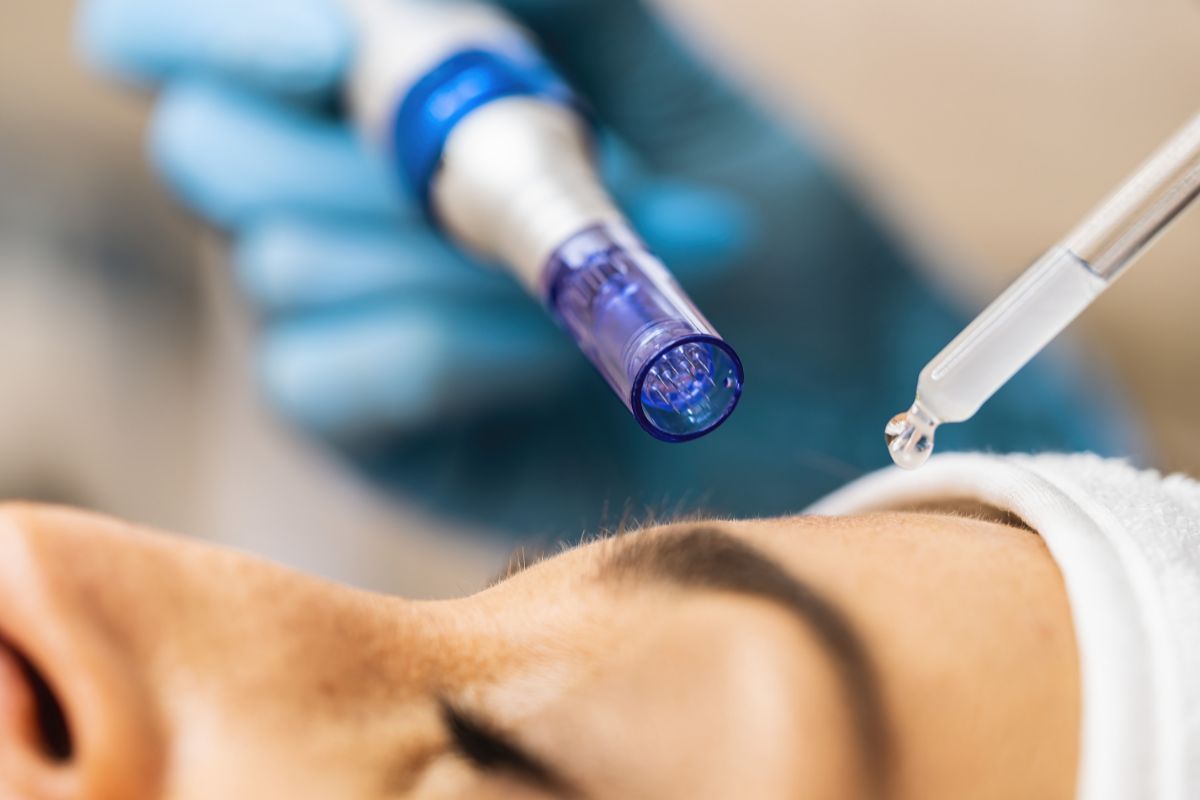About Microneedling
Microneedling, also known as Percutaneous Collagen Induction (PCI) is a minimally invasive, safe, effective non-surgical technology used to treat numerous skin conditions. There is little to no recovery with minimal side effects while obtaining good cosmetic results.
Microneedling creates numerous microchannels in the skin. The creation of microchannels induces a controlled skin injury with minimal damage to the upper layers of the skin. This stimulates the dermis to undergo wound healing leading to the release of growth factors, triggering collagen and elastin formation in the dermis. Over the next few weeks to months there is a reduction in wrinkles and thickening and tightening of the skin. The microchannels can also be utilized to deliver antioxidants, growth factors, vitamins, minerals, and medication to enhance the regeneration of the skin.
First topical numbing cream is applied to the area of treatment to make the procedure as comfortable as possible. Microneedling is done with an electric powered pen that glides over the skin surface until pinpoint bleeding is seen. The pens have disposable needle tips that can be adjusted to different depths depending on the area of treatment. This limits infection risk and permits treatment of small areas such as upper lip lines.
Although home derma-rollers are available, the pressure that needs to be applied with rolling can be inconsistent, they are difficult to use for small areas such as scars, they become dull over time, and can cause pigmentation, infection and scarring if used incorrectly.
Microneedling can be used for patients seeking to rejuvenate sun damaged skin, lighten abnormal pigment, smooth textural problems, diminish wrinkles and improve skin laxity. It is also beneficial for patients looking to improve acne scarring, hair loss, scars, stretch marks and enlarged pores.
You should not undergo microneedling if you are pregnant, breastfeeding, have inflammatory acne, or are immunocompromised. Patients with platelet or blood clotting disorders, uncontrolled diabetes, chronic liver or autoimmune diseases are also not good candidates for microneedling. If you have an active skin infection in the area to be treated or tend to develop keloid scars you should not undergo microneedling.
Microneedling can be safely used anywhere on the body. The needle depth can be adjusted to the specific skin location.
Microneedling causes the reorganization of existing collagen and production of new collagen. Although there may be an improvement in skin tone and radiance seen within the first week, it takes 6-8 weeks for clinically apparent collagen stimulating results to be seen.
Our body is constantly breaking down collagen, so results are not permanent, and it is recommended that you undergo sessions every 6-12 months to maintain the results.
Microneedling is a very safe, effective, minimally invasive treatment that has been studied extensively in the field of cosmetics. It has fast post-treatment recovery, limited side effects and impressive clinical results.
There is minimal pain when undergoing microneedling. Topical numbing cream is applied to the skin before to minimize any pain from the procedure.
After microneedling there may be a sunburn like discomfort with some redness, bruising, and swelling that resolves in 48 hours. The skin heals rapidly afterwards so there is limited risk of skin infection or pigmentation changes. There will be some skin flaking during the exfoliation process which will resolve in 2-3 days. There is a risk of a skin reaction if you have an allergy to one of the components used with microneedling such as hyaluronic acid, growth factors or medication.
Before microneedling you can continue all skin care products including retinol, antioxidants and growth factors. Blood thinning medications (ASA, aspirin, ibuprofen), supplements (fish oil, Vitamin E) or herbal remedies (garlic, ginkgo, dong quai, ginger, turmeric) do not need to be stopped although they will increase the chances of bruising. It is advisable to avoid sun exposure or tanning for 2 weeks before the procedure. If you have a history of cold sores or shingles in the area to be treated, you should take a prescription antiviral medication to prevent a flare up of cold sores or shingles.
Any serums, medication or growth factors should be left on for at least 4 hours after the procedure. After this a gentle cleanser followed by a moisturizer should be applied to the skin two times a day. A mineral sunscreen with at least SPF 30 should be applied daily in the morning for the following 2 weeks to prevent any dyspigmentation of the skin. Makeup may be applied after 24 hours. Active skin care products such as retinol, glycolic acid, salicylic acid, vitamin C or exfoliants can be resumed after 5 days unless any redness persists. You may resume regular physical activities the next day.
Although some results are seen after one treatment, a series of 3 -5 treatments 2-4 weeks apart is recommended depending on the concern being treated. Continued improvement is seen for up to 6 months after the last treatment. After this initial series, single sessions every 6-12 months help to maintain and enhance the cosmetic outcome.
Microneedling has been shown to be beneficial for hair growth due to its capacity to enhance growth factor production and facilitate hair follicle development and cycling. It increases blood flow to hair follicles and induces collagen and elastin formation. It also created channels in the scalp that can be used to deliver medication, growth factors, exosomes and nutrients to the hair follicles to aid in the hair restoration process.
Microneedling can be safely combined with dermal filler treatments, but it is inadvisable to combine it with wrinkle relaxer treatments. This is to prevent diffusion of the botulinum toxin caused by swelling and bleeding.
